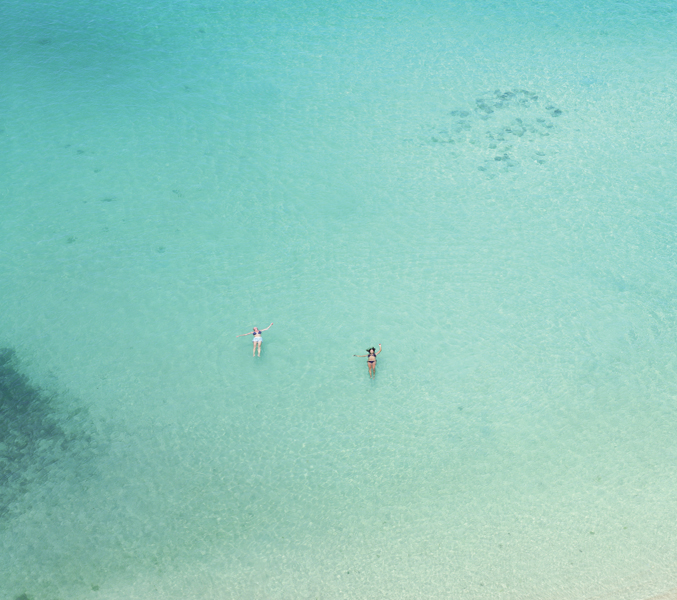[Spring 2009]
Henry Art Gallery, Seattle, Washington
11 October 2008 – 18 January 2009
Over the past three decades, Richard Misrach has created a body of work that attempts to reconcile his two lifelong passions: a socio-political activism forged during his student days at Berkeley in the late 1960s and an affinity for images of the American landscape, coupled with a call to conservationism espoused by photographers such as Ansel Adams. Misrach considers his own twin interests to be not only by necessity intertwined, but frequently at odds with one another. Advocating for social change has inevitably led to periods of disillusionment and disengagement; in turning his camera lens toward the desert and other seemingly desolate locations such as swamps and jungles, Misrach found a restorative retreat, albeit without the overtly religious overtones.
Working over multiple years on large series projects, Misrach is a steadfast advocate of an anticipated moment in contrast to a decisive moment. For most of his career, he adhered to the practice of “straight photography,” composing his photographs in the camera and eschewing editorial and other forms of image manipulation. Apart from philosophical motivation, Misrach’s approach is bound in practicality: the use of a large-format camera requires meticulous consideration during set-up and execution of each shot. Consequently, the “just-misses” are as much a part of the process as the successful images.
Soon after the events of 9/11, Misrach took a trip to Hawaii with his wife. From the vantage point of the balcony of his hotel room, he was captivated by the slumbering bodies on the sandy beach and by swimming figures, in pairs or all alone in vast expanses of water. The floating bodies, coupled with his position of being removed from the action and yet a voyeur, provoked a jarring juxtaposition between the escapism and reverie of the placid beach and the remembrance of city towers, planes, and ashes. Thinking about the events that had transpired while sequestered in this vacation haven prompted recollections of Nevil Shute’s post-apocalyptic tale, On the Beach, in which clusters of disparate individuals are thrown together by chance and circumstances to wait out the end of the world.
In this series, begun in January 2002 and taken over a three-year period from the same vantage point, Misrach did not overtly stage any of his photographs, and yet the captured scenes of sun seekers at rest and at play seem painterly, static, and, at times, otherworldly. In one photograph, the viewer looks squarely down from a bird’s-eye view on a picture plane that is densely populated by sunbathers, each individual roughly the size of an action figure or doll. In this instance in particular, the clarity of the image is unnerving – we can easily read one sleeping man’s newspaper as he gets a sunburn. In other images, people appear in small clusters of activity – lovers stealing a kiss on the beach or floating like Ophelia in the water, their bodies are isolated by water or sand, heightening a sense of distance and desolation.
The sublime, monumental-scale colour photographs of waves and beachfront induce the sensation of being swallowed up by an immeasurable and seemingly unknowable vastness. In its wake, words fail us – a terrible beauty is felt through the body. Capturing scenes that elicit this visceral response has been the province of photography from the moment that its practitioners could work out of doors. The desire to give shape and nuance to such places continues to be framed and reframed, literally and figuratively.
Nonetheless, such images are imbued with an inherent paradox; while the sublime requires a participant, landscape, for all its evocative power, exists squarely and massively in opposition to the human presence and exists almost in spite of its impact, whether intentional or consequential. Misrach underscores the fragility of the human figures placed in the landscape by dwarfing the body and enveloping the viewer in the large expanse of watery space. The photographs in On the Beach and in the series preceding it, Scrubs, diverge from Misrach’s typical working method in that for these images, he scanned the negatives and produced digital prints, thus enabling him to crop, reframe, and employ digital interventions. In at least one instance, he removed a figure from the beach, heightening the cinematic mise-en-scène. Truly, Misrach’s photographs are sublime – each photograph is gorgeously rendered, depicting vast stretches of sand and surf in exquisitely fine detail. With overt references to Shute’s novel and the introductory text foregrounding 9/11 as Misrach’s intellectual starting point for the series, the viewer has a significant basis for considering the works; however, the images conjure up equally potent societal apprehensions such as climate change, the growing disparity between social classes, and the erosion of inhabitable space for an exploding population. The photographs themselves are untitled except for the negative numbers. In leaving the visual presentation of the photographs open in such a way, Misrach carves out a path for the viewer’s own thoughts and impressions, thereby underscoring the participatory obligation of the sublime.
Johanna Mizgala is a curator and critic based in Ottawa. She is working on a study of the subject’s sense of humour in early photographic portraits and how these examples of spirit and transgression transcend distinctions of race, class, and gender.

